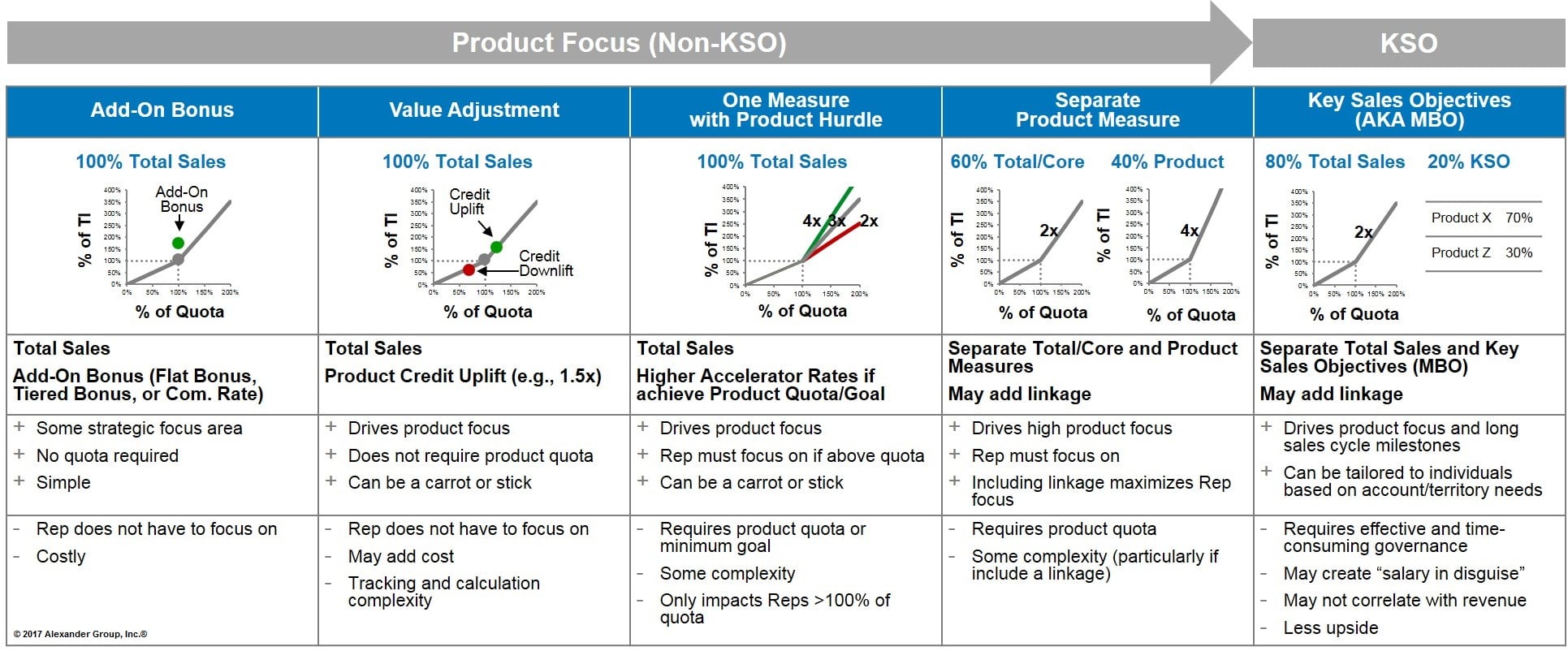Media Ad Sales Solutions: Driving Solution Selling in the Sales Comp Plan
In today’s competitive environment, media advertising sellers must consult with CMO’s and budget makers to understand their goals–improve brand, drive sales and/or be innovative. The sellers then must develop customized and relevant solutions to meet these goals and prove their ROI. Leaders are interested in recognizing and rewarding their sellers for accomplishing these goals. In Alexander Group’s recent Modern Media Ad Sales Study with 50+ participants, 88 percent of Media Ad Sales leaders report they struggle to align sales compensation to their solution-selling goals.
The right sales compensation solution depends on strategic goals, product lifecycle, product margins, job role and product focus vis-à-vis other initiatives to keep plans simple. The graphic below outlines five solution-selling options Media Ad companies use.
Solution Selling Focus Options

Add-On Bonus: Many companies use an add-on bonus to incent sellers to push a new product post launch. The goal is to reward the sellers for the additional effort required to learn the new product for a set period of time. However, sellers can choose not to focus on the new product and continue to focus on their comfort zone. The add-on bonus can also be costly.
Value Adjustment: Another simple solution is to value-adjust quota credit up for strategic products or value-adjust down to lower margin product. The goal is to adjust the value based on strategic value and effort required to sell product. Just like add-on bonuses, sellers can choose where to focus their time and again continue to focus on their comfort zone. This solution can be costly and complex and requires tracking both true sales and value-adjusted sales.
One Measure With Product Hurdle: A more impactful solution is to adjust accelerator rates up or down based on achievement of a specific product quota or minimum performance standard goal. The goal is to provide incremental or decreased upside pay based on achievement of product goal. Use incremental pay (carrot) to reward for focus; use decreased upside (stick) to communicate an expected performance standard. This solution is more complex, requires separate product quota and affects only sellers who over-exceed their total sales quota.
Separate Product Measure: When strategic product focus or balancing strategic vs. core/low margin product is paramount, companies will carve out two separate measures. The goal is to communicate seller time focus on the two products via the assigned weights of the two measures. Although it clearly communicates focus, two-measure plans are more complex than one-measure plans and require more precise quota setting.
Key Sales Objectives (Otherwise Known as Management by Objectives): A few companies choose to use key sales objectives to drive product focus and sales process milestones. The goal is to provide a flexible solution that allows leaders to tailor sales goals/initiatives by role or even by individual. Although sellers must focus on these objectives to earn incentive, they require effective and time-consuming governance to prevent them from being a give-away or “salary in disguise,” which are a poor use of costly sales compensation dollars.
Are you struggling with how to drive solution selling within your sales compensation plan or other initiative? Let us know. Alexander Group’s Media Ad Sales compensation consultants are ready to help.
Read more Alexander Group insights on how media companies can drive value-based sales strategies amid rapid industry change.
